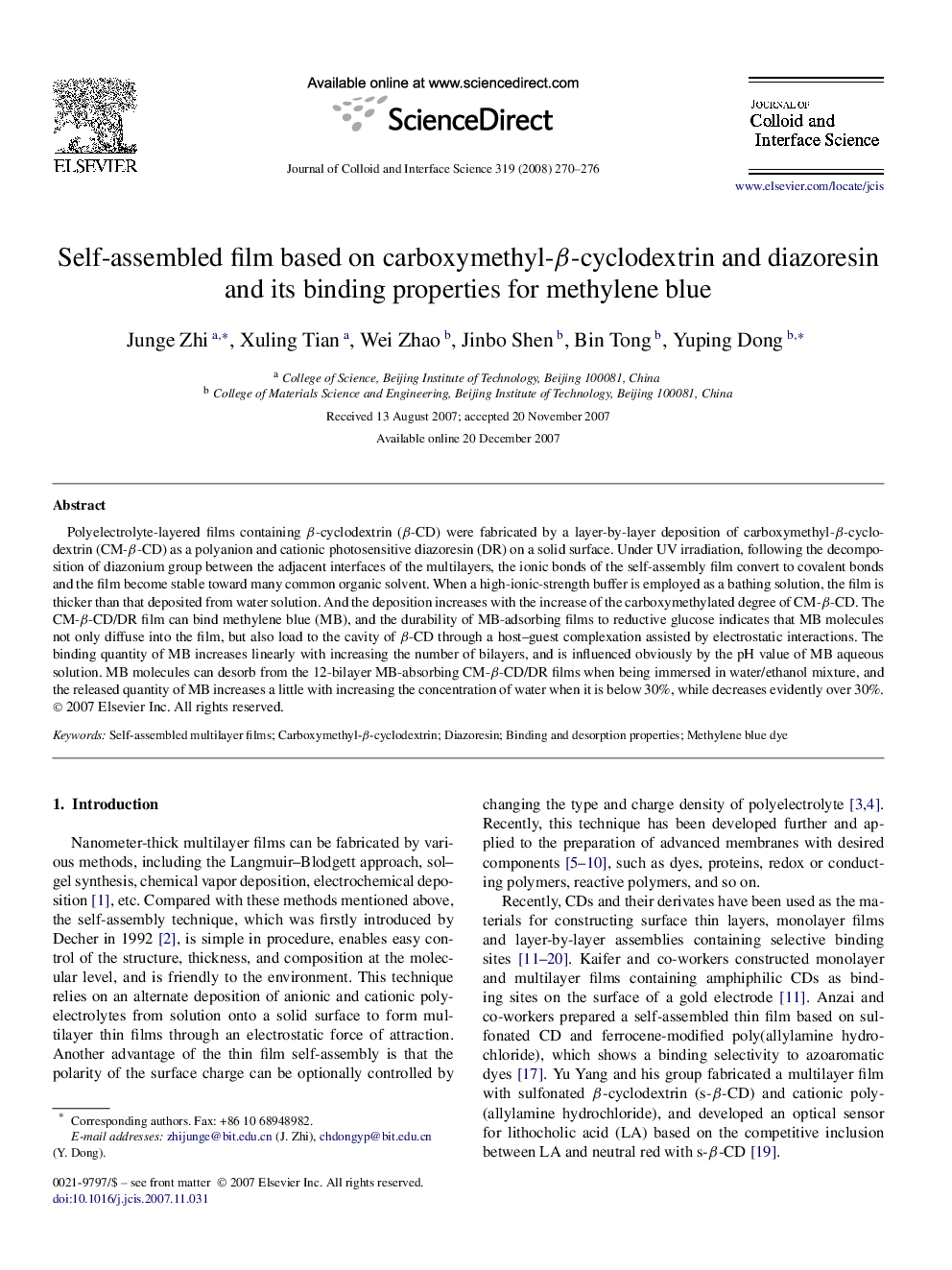| Article ID | Journal | Published Year | Pages | File Type |
|---|---|---|---|---|
| 611476 | Journal of Colloid and Interface Science | 2008 | 7 Pages |
Polyelectrolyte-layered films containing β-cyclodextrin (β-CD) were fabricated by a layer-by-layer deposition of carboxymethyl-β-cyclodextrin (CM-β-CD) as a polyanion and cationic photosensitive diazoresin (DR) on a solid surface. Under UV irradiation, following the decomposition of diazonium group between the adjacent interfaces of the multilayers, the ionic bonds of the self-assembly film convert to covalent bonds and the film become stable toward many common organic solvent. When a high-ionic-strength buffer is employed as a bathing solution, the film is thicker than that deposited from water solution. And the deposition increases with the increase of the carboxymethylated degree of CM-β-CD. The CM-β-CD/DR film can bind methylene blue (MB), and the durability of MB-adsorbing films to reductive glucose indicates that MB molecules not only diffuse into the film, but also load to the cavity of β-CD through a host–guest complexation assisted by electrostatic interactions. The binding quantity of MB increases linearly with increasing the number of bilayers, and is influenced obviously by the pH value of MB aqueous solution. MB molecules can desorb from the 12-bilayer MB-absorbing CM-β-CD/DR films when being immersed in water/ethanol mixture, and the released quantity of MB increases a little with increasing the concentration of water when it is below 30%, while decreases evidently over 30%.
Graphical abstractThe UV–vis spectra of MB-adsorbing CM-β-CD(7.4)/DR film before and after being immersed in reductive glucose solution.Figure optionsDownload full-size imageDownload as PowerPoint slide
